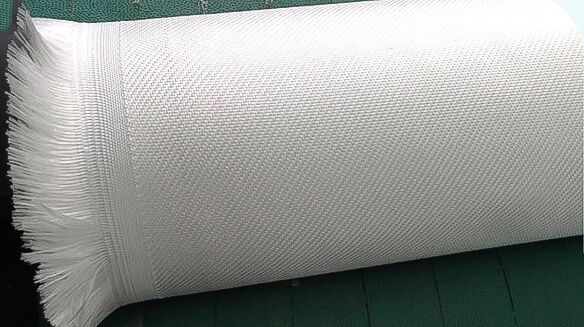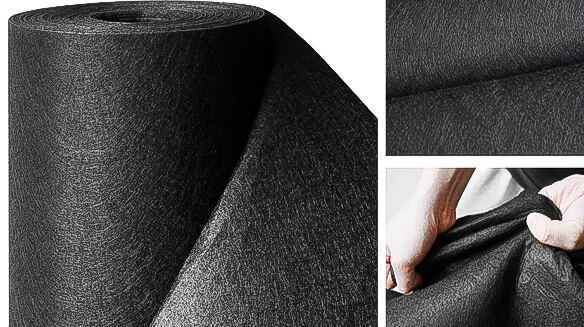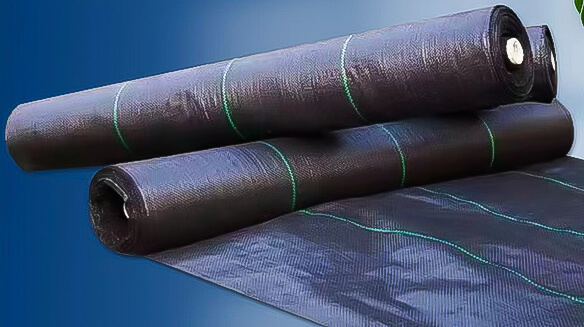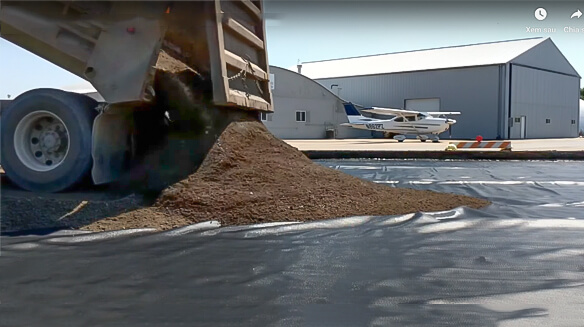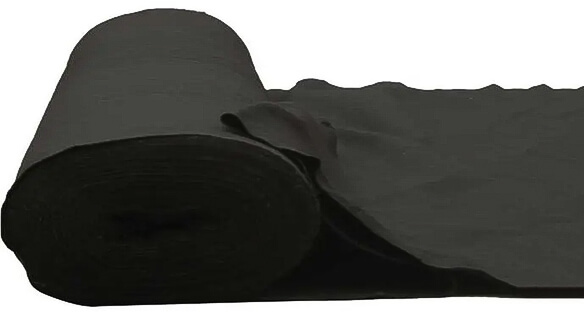Contents
- Can You Put Geotextile Fabric Over Gravel? Optimal Install
Can You Put Geotextile Fabric Over Gravel? Optimal Install
Introduction
A driveway is an essential feature of any property, acting as a welcoming path for guests and a barrier from external elements. Many property owners face the challenge of keeping their driveways clear from invasive weeds and grass that sprout amidst the gravel.
Struggling with driveway weed management? Geotextile fabric offers an effective solution! This blog post presents a comprehensive guide on utilizing geotextile fabric on gravel pathways. This method enhances drainage and thwarts weed propagation.
We’ll dive deeper into the best material for your project, correct installation methods, and valuable maintenance advice to assure lasting effectiveness. Let’s dive in!
Key Takeaways
- Geotextile fabric stands as a formidable solution for controlling weeds on gravel driveways. Beyond weed control, it acts as an ‘equipment avoidance’ layer and provides soil stabilization and erosion control.
- For effective installation of geotextile fabric over gravel, site preparation is the first crucial step. Following that, anchor pins or staples should be used to firmly secure the fabric in place. Next, layers of gravel are added for compaction support, after which the surface should be compacted using tampers or rollers.
- Note, improper installation of geotextiles may lead to issues such as weed growth through coverage gaps. This can be due to insufficient layering of components, thereby reducing the material’s lifespan and its associated benefits.
- As durable construction materials, geotextiles need careful selection based on the area’s requirements and product specifications. Professional engineers often provide optimal usage and maintenance advice. By doing so, geotextiles contribute to efficiency and sustainability in projects.
Benefits of Using Geotextile Fabric Over Gravel
Geotextile fabric brings multiple advantages to gravel driveways, including weed prevention, soil stability, erosion control, and enhanced drainage.
Weed Control
Geotextile fabric, when layered over gravel and soil, serves as an excellent weed deterrent. It creates a barrier blocking sunlight and air, thus inhibiting weed germination and growth.
Moreover, the fabric permits water filtration while blocking mud and dust from gathering on the driveway’s surface. This feature aids in maintaining the cleanliness and overall aesthetic of your property.
Compared to alternative methods like herbicides or manual weed removal, geotextile fabric demands less maintenance. It eliminates the need for periodic repeats required by these other preventive measures.

Benefits of Using Geotextile Fabric Over Gravel
Soil Stabilization and Erosion Prevention
Geotextile fabric is a popular choice for soil stabilization and erosion prevention. Its porous nature allows water to seep through while securing soil or rock material, making it perfect for gravel driveways or pathways.
Geotextiles are produced from synthetic materials like polyester, nylon, and polypropylene. This ensures durability, tear and puncture resistance, and resilience against weather conditions. A simple overlay of geotextile fabric on gravel can enhance drainage by preventing the accumulation of excess moisture that could result in soil erosion.
Moreover, this fabric curbs the growth of weeds or vegetation on your driveway. This not only enhances the aesthetic value but also reduces costs. It negates the need for frequent re-graveling that becomes necessary when weeds invade the base of the driveway.
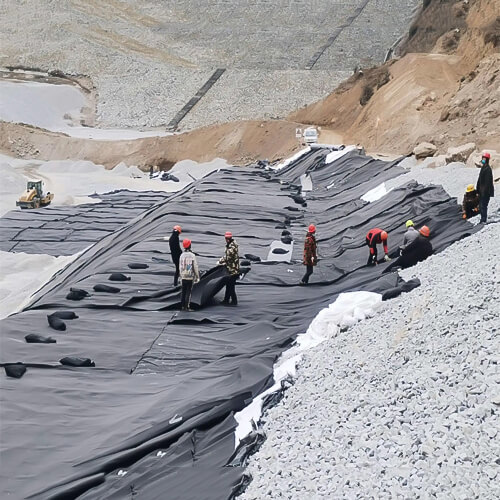
Soil Stabilization and Erosion Prevention
Improved Drainage
Geotextile fabric represents a crucial innovation for enhancing drainage. By overlaying this fabric on exposed soil, you can safeguard against erosion triggered by wind and rainfall. This fabric lays a stable foundation for plant growth and allows for efficient water drainage management by dispersing water over a broader area.
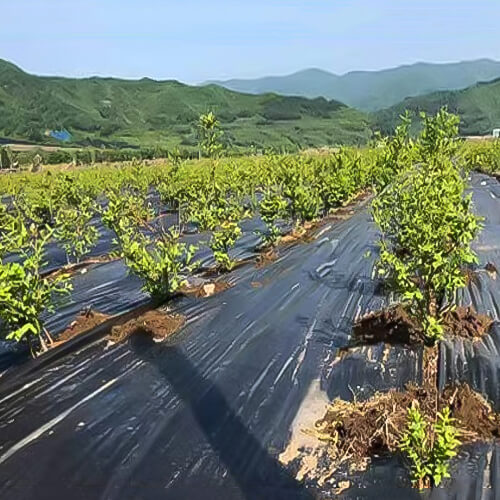
Improved Drainage
Non-woven geotextile fabrics, when paired with gravel, excel in enhancing drainage. These fabrics are designed to filter between 5mm to 100 microns effectively, allowing minimal sediment to pass through while maintaining efficient flow rates.
These fabrics are also excellent for driveways, functioning much like large sponges. They slowly release tiny droplets while helping retain moisture. Additionally, they offer added stability due to their high strength, maintaining their shape under the weight of heavy vehicles or machinery. Yet, they remain flexible enough to accommodate changes such as expansion without tearing or ripping. This makes them ideal for use with gravel surfaces where substantial movement might occur over time due to ground heaving, and so on.
Considerations for Using Geotextile Filter Fabric Over Gravel in Building and Driveway Applications
Employing geotextile fabric over gravel offers several benefits like soil stabilization, extended gravel lifespan, and enhanced drainage. However, before its application, there are crucial factors to consider. These include the size of the gravel and the type of geotextile fabric to be used.
Gravel Size and its Place in Geotextile Applications
The size of the gravel is crucial when applying geotextile fabric. Selecting the right gravel size can greatly influence the fabric’s performance, so it’s important to match the size with your project’s specific needs.
Smaller gravel sizes usually work best for footpaths or driveways as they create a smoother, more stable surface. On the other hand, larger gravel sizes are ideal for areas demanding better drainage or robust support, such as beneath roads or buildings. Keep in mind, choosing the correct gravel size can considerably boost the geotextile fabric’s efficiency and prolong your project’s lifespan.
Fabric Type: Choosing Between Woven and Non-Woven Geotextile
The market offers various types of geotextile fabric, each with unique features and applications. The main types include woven, non-woven, and knitted fabric.
Woven geotextile fabrics, known for their durability and robustness, excel in applications demanding high tensile strength and low deformability. They’re generally used in road construction, parking lots, and similar high-stress zones.
In contrast, non-woven geotextile fabrics stand out in areas requiring superior water permeability and adaptability. They’re perfect for drainage, soil filtration, and landscape protection projects.
Lastly, knitted fabrics suit specific applications where flexibility and permeability are crucial. The ideal fabric type largely depends on your project needs, so choose wisely.
In conclusion, considering the gravel size and the right type of geotextile fabric is pivotal for your project’s success. By making informed choices, you can significantly enhance your infrastructure’s lifespan and efficiency.
Proper Installation Techniques for Geotextile Fabric Over Gravel
When installing geotextile fabric, it is essential to properly prepare the site and secure the fabric before adding and spreading gravel over it.
Site Preparation
Preparation is key when it comes to creating a durable and efficient base for driveways using geotextile fabric over gravel. Before installation, ensure to clear all debris, such as loose rocks or dirt from the surface. This will aid in achieving proper adhesion.
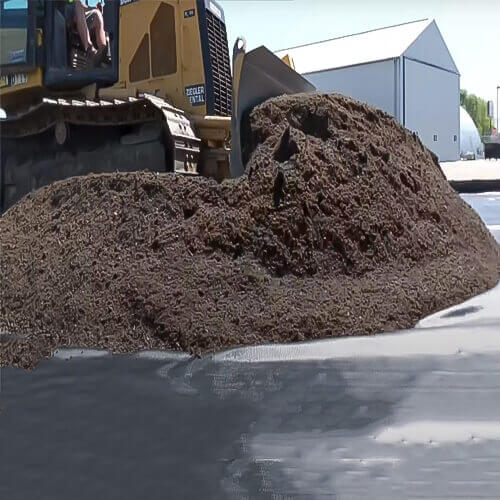
Site Preparation
Ensuring the area is leveled off is vital for the material to lay flat and stable when applied. During the geotextile fabric installation, check for any sharp objects like foxholes or tree roots that could puncture the material.
After adequate surface preparation, proceed with laying the chosen geotextile fabric, ensuring each section overlaps for comprehensive coverage. Apply the correct amount of weight based on the soil type and specific installation requirements as per manufacturer guidelines or a geotechnical engineer’s advice. Be wary not to over-compact the soil, as it can cause granular materials to collapse and lead to the foundation settling over time, possibly causing ground service problems.
Thorough site preparation is key to reaping the full benefits of geotextiles. It aids effective water flow control, particularly in applications like slabs on grade, to prevent moisture intrusion and suppress weed growth. Geotextiles also stabilize exposed soils, reducing erosion risks in roadway projects and protecting coastlines, waterways, and fish habitats from sedimentation and pollution. With an approach that emphasizes environmental preservation, site preparation becomes crucial for achieving sustainable community results. Conscious engagement in this process is wise due to its substantial impact.
Fabric Installation
Appropriate fabric installation techniques are a must when adding geotextile fabric over gravel. Key steps involve site preparation, subsoil preparation, and the fabric installation itself.
For effective moisture protection and weed control, use a woven grade of geotextile for driveways. Once the fabric is laid out as per specific dimensions, secure it with anchor pins or staples. This ensures it stays in place during use or under heavy loads.
Next, apply gravel—usually about 6 inches deep—and employ a compaction technique like rolling or using vibratory plate compactors for a secure surface layer.
Optionally, appropriately sized flagstones can be added, considering their impact on the overall performance and traffic flow safety across pavements covered by driveway fabrics.
Lastly, once correctly installed, the geotextile will require regular maintenance checks, including repairs due to potential damage from daily wear and tear activities like vehicular movement.
Securing the Fabric: Ensuring Your Geotextile Filter Fabric Stays in Place
Correctly securing the geotextile fabric over gravel is a vital part of the installation process. Once the fabric is suitably placed and overlapped, it should be tensioned to remove any wrinkles or folds on its surface.
This step enhances its performance in maintaining permeability and preventing substrate cracks due to soil shifts underneath. Ground staples or pins can be used to keep the fabric in place. They should be applied around all fabric edges and along any seams created when overlapping pieces.
This step is key to maintaining stability under your gravel layer for many years. The fasteners prevent movement caused by weather or heavier loads such as vehicle traffic or other forces.
Adding and Spreading Gravel Over Geotextile Fabric
The addition and spreading of gravel is crucial when using geotextile fabric for a gravel driveway. The fabric helps stabilize the surface, preventing it from shifting over time. A layer of gravel on top of the geotextile fabric forms the driveway’s base.
Ensure that you use enough gravel to cover the geotextile fabric entirely for maximum benefits such as enhanced drainage, efficient weed control, soil stabilization, and erosion prevention.
During the gravel installation and spreading, avoid driving or parking equipment on it as this could stretch or damage the material. Spread the gravel evenly across your driveway to prevent depressions where water might collect after heavy rain.
Compaction Techniques: Finalizing Your Driveway or Building Project
Compaction techniques are vital in the geotextile fabric installation process over gravel. When performed correctly, compaction provides a stable foundation that prevents shifting or settling, ensuring soil particles remain tightly bound.
The compaction process has two steps. First, compress the layers of gravel and soil beneath the geotextile fabric. Second, lay a thick layer of gravel on top and level it out using tampers or rollers.
Proper site preparation is crucial before installing the geotextile fabric. It ensures effective drainage and avoids standing water on pathways or roads. You can choose different grades of woven fabrics based on your needs for ground support, reinforcement, weed control, or moisture prevention in slab-on-grade structures.
Tensioned geotextiles can provide additional support by relieving vertical forces from subgrade roads, promoting stability even on unpaved roads subject to heavy traffic.
Maintenance and Repair of Geotextile Fabric Over Gravel
Maintaining a gravel driveway with an installed geotextile fabric calls for diligent and regular care. While durable fabrics are recommended for long-term effectiveness, they may require repairs over time due to wear and tear or equipment damage.
A routine inspection of the fabric is vital to prevent further damage or degradation of its function. In some situations, applying a new fabric layer might be necessary if the existing one has punctures, tears, or has shifted.
To ensure the fabric remains effective and durable, handle it with care. Avoid operating heavy machinery on top of it. Heavy loads can cause tearing or shifting, undermining the geotextile’s effectiveness.
Conclusion
Geotextile fabric presents an excellent solution to improve the stability and lifespan of gravel driveways or paths. It offers myriad benefits such as weed control, soil stabilization, erosion prevention, enhanced drainage, and less maintenance.
With correct installation and sufficient gravel layers for compaction support, geotextile fabric can serve as a long-term investment. It can enhance your property landscape while eliminating the need for constant weed control or tackling soil erosion.
Consider factors like durability, strength requirements for road underlayment, and permeability to make an informed choice of geotextile material for your specific project.
However, remember that the proper installation of geotextile fabric is critical over any surface material like gravel paths or driveways. Improper installation could either allow weeds to grow through or cause premature failure due to inadequate compaction support from insufficient layers.
FAQs
1. What is geotextile fabric used for?
Geotextile fabric, a sturdy woven material, finds its main use in landscaping and construction. It enhances soil stability and offers benefits like drainage, filtration, and separation. Moreover, it shields the soil from erosion.
2. Can I put geotextile fabric over gravel?
Sure, you can use geotextile fabric over gravel or other solid surfaces. The condition is the area must have enough stability. This stability allows for water flow through capillary action or gravity-driven drainage below the stone particle base layer.
3. Are there any special installation instructions for using geotextiles?
Yes, overlapping geotextile fabric sheets by at least 6 inches (15 cm) ensure durability and effectiveness. If seams are required, secure them with large staples. These staples should be 4-6 inches (10-15 cm) apart on both sides of the overlap. This interlocks them tightly when laid flat on the substrate beneath.
4. Is regular maintenance necessary if I install a geotextile barrier?
It’s a good idea to check your installed system every 1-2 years. The frequency depends on environmental conditions, such as rainfall levels in your area. Regular checks help prevent unnoticed siltation. This could result in costly repairs down the line.

